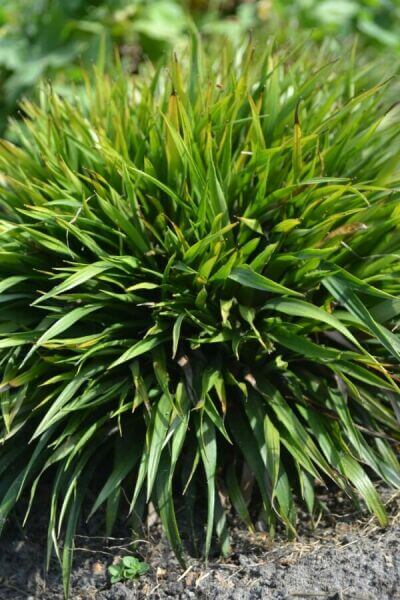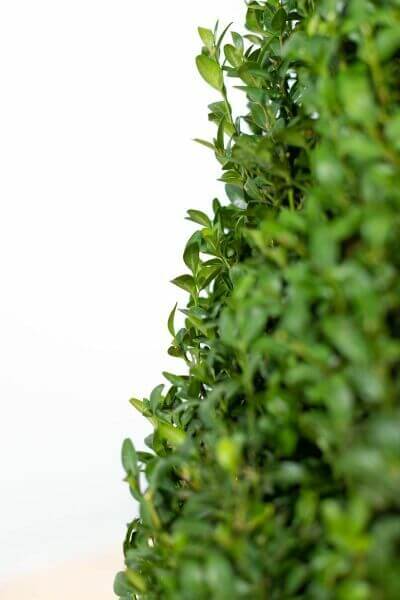Hedge Plants For Salt Tolerance
Hedge Plants For Salt Tolerance
Blog Article
Drought-tolerant Hedging Plants
Boost your garden's attraction with rich hedge varieties such as Yew (Taxus), Thuja, Laurel, Photinia, and Bamboo, commemorated for their structural stability and environmental advantages.
Yew and Thuja offer evergreen coverage and winter strength, while Laurel uses rapid development and broad, aromatic leaves.
Photinia adds seasonal appeal with its vibrant red foliage, and Bamboo lends a low-maintenance, tranquil ambiance.
These hedges enhance air quality, reduce noise, and create tranquil, personal spaces.
Appropriate planting, spacing, and upkeep ensure vigorous development and eco-friendly harmony.
Explore how these rich varieties can raise your garden's appeal and well-being.
Key Takeaways
Transform Your Garden With Lush Hedge Ranges
- Select Yew for its thick, evergreen development and unrivaled durability.
- Go with Laurel for its quick development and broad leaves, ensuring quick privacy.
- Select Photinia for its lively seasonal foliage, which turns a striking dark red.
- Make use of Bamboo for a low-maintenance, winter-hardy hedge with aesthetic appeal.
- Space plants 2-3 per meter and prune routinely for ideal development and health.
Popular Hedge Plants
When changing a garden with lavish hedge ranges, it's necessary to think about popular hedge plants such as Yew, Thuja, Laurel, and Photinia due to their special characteristics and benefits.
Yew (Taxus) is highly respected for its durability and thick, green development, making it a prime choice for withstanding landscapes.
Thuja is noted for its evergreen foliage and robust winter season resilience.
Photinia includes seasonal vibrancy with red leaves that darken over time, developing vibrant visual appeal.
Laurel provides quick growth and fragrant, broad leaves, ideal for fast personal privacy.
Furthermore, Bamboo is an exceptional option for ambiance, using a low-maintenance, winter-hardy option that enhances the garden's aesthetic with its classy, swaying walking canes.
These choices accommodate a variety of horticultural requirements and choices.
Benefits of Garden Hedges
Garden hedges offer a wide variety of benefits, making them a valuable addition to any landscape. These natural barriers are cost-efficient to execute and offer substantial wind defense, improving air circulation and adding to sound decrease. The dense foliage of hedges like Thuja and Beech makes sure privacy by blocking exposure, creating a secluded and tranquil environment.
Hedges likewise play a vital function in microclimate regulation, supplying a stable environment that fosters plant development and reduces temperature level changes. Their detailed leaf structures filter toxins, improving air quality and adding to a much healthier garden ecosystem.
Additionally, hedges excel in noise decrease, absorbing and deflecting acoustic waves to lower ambient sound levels. This dual performance of supplying both acoustic and visual personal privacy enhances the total tranquility and aesthetic appeal of any garden.
Planting and Upkeep Tips
For a successful hedge, precise preparation of the planting location is essential. Make sure the soil has proper pH and drain to support strong root advancement.
Space the plants appropriately for the picked types. Water the hedge frequently throughout its preliminary growth phase, adjusting as required with seasonal modifications.
Carry out a methodical bug control and disease prevention technique, utilizing natural or chemical treatments when necessary. Routinely check for aphids, termites, and fungal infections.
Apply mulch to maintain moisture and suppress weeds. Seasonal pruning promotes dense growth and air flow, vital for plant health.
Following these standards will help you cultivate a lively, properly maintained hedge that enhances the beauty of your garden.
Spacing and Trimming Guidelines
Spacing and Trimming Guidelines
Appropriate spacing and trimming are essential for cultivating healthy, visually appealing hedges. Sufficient spacing guarantees each plant gets sufficient nutrients, light, and airflow.
Follow these guidelines for optimal hedge maintenance:
- Spacing: Position hedge plants 2-3 plants per meter to motivate robust development.
- Pruning Techniques: Regular pruning is important for keeping wanted hedge height and shape. Cut brand-new growth in summer season and cut back older wood during winter.
- Seasonal Care: Change cutting schedules and approaches according to seasonal requirements to ensure plant health.
- Hedge Height: Regularly monitor and cut to keep the preferred hedge height and accomplish uniform aesthetics.
Abiding by these actions will guarantee your hedge prospers, improving both the appeal and functionality of your garden.
Choosing the Right Hedge
Picking the Right Hedge
Choosing the appropriate hedge includes assessing factors such as fully grown height, foliage density, and ecological resilience. Effective hedge plant selection requires comprehending each species' development qualities and site-specific adaptability.
For instance, Yew (Taxus) provides excellent durability and dense development, while Thuja is notable for its winter season durability. In addition, considering upkeep requirements is important; fast-growing species like Laurel or Privet need routine trimming, whereas low-maintenance alternatives like Bamboo or Ivy may be more suitable for those looking for minimal maintenance.
Environmental factors such as soil type, light schedule, and wetness conditions ought to likewise guide the choice process. This cautious technique ensures the picked hedges will flourish, supplying both practical and aesthetic benefits to the garden landscape.
Shipment and Planting Advice
To ensure your hedge plants grow, they should be delivered by specialized carriers and planted promptly upon arrival.
Follow these important actions for effective planting:
- Soil Preparation: Enrich the soil with organic matter to enhance drain and nutrient material.
- Planting Depth: Create a trench two times the width and equal to the depth of the root ball.
- Watering Methods: Water completely after planting, keeping the soil regularly moist but not saturated.
- Mulching: Use a layer of mulch to keep wetness and reduce weeds.
Consumer Support and Service
Given the vital role of timely support in horticultural pursuits, our consumer assistance team is offered 6 days a week through telephone, e-mail, and social networks to use expert guidance and swiftly deal with any concerns. Their commitment to fast reaction times ensures customer complete satisfaction by fixing inquiries connected to plant health, ideal planting techniques, and maintenance schedules.

Action Time
Email
6 days a week
This thorough assistance system, reinforced by an outstanding 9.3/ 10 client score, highlights our commitment to enhancing the gardening experience for each client.
Often Asked Questions
For How Long Does It Consider Hedge Plants to Develop?
Hedge plants normally need one to 3 years to end up being totally developed, with the exact duration differing by types and growing conditions.
Reliable care throughout this important duration is necessary for robust development. Constant watering, watchful weed control, and suitable fertilizer application are pivotal in promoting strong root development.
For example, fast-growing types like Laurel might develop faster, while slower-growing ranges such as Yew may take longer. Persistent maintenance accelerates the facility procedure, resulting in dense and healthy hedges.
What Are the very best Hedge Plants for Personal Privacy?
The concern of the very best hedge plants for privacy includes assessing evergreen and deciduous choices.
Evergreen hedges like Thuja, Laurel, and Cypress provide year-round protection, making sure constant privacy.
On the other hand, deciduous hedges such as Beech use seasonal privacy, shedding leaves in colder months.
Secret maintenance tips for personal privacy hedges include regular cutting, fertilizing in spring, and proper spacing-- normally 2 to 3 plants per meter.
Additionally, constant watering and persistent weed removal are important for promoting healthy, dense growth.
Can Hedge Plants Draw In Wildlife to My Garden?
Yes, hedge plants can bring in wildlife to your garden by providing vital advantages like shelter, food, and nesting sites, thereby improving regional biodiversity. For example, yew, holly, and laurel are outstanding for drawing in birds, while ivy supports a range of insects.
Nevertheless, it is essential to keep in mind that there are some drawbacks, such as increased upkeep to manage insects and routine upkeep. Thoroughly picking and preserving hedge ranges can help balance these advantages and drawbacks, ultimately promoting a sustainable and lively ecosystem in your garden.
Exist Any Blooming Hedge Plants Available?
Yes, there are flowering hedge plants available that can improve the charm of your garden.
For instance, Elaeagnus, likewise referred to as Olive Willow, produces fragrant white flowers in the fall, including a touch of sophistication.
Photinia, another popular choice, showcases vibrant red leaves that develop into an abundant green, developing a dynamic visual effect throughout the seasons.
To guarantee these plants grow, it's essential to practice appropriate pruning methods and seasonal upkeep, such as cutting brand-new growth in the summer and cutting back in the winter.
These procedures will assist keep the health and visual appeal of your blooming hedges.
How Do I Prevent Pests in My Hedge Plants?
To prevent pests in hedge plants, employ natural insect control techniques and keep correct hedge care. Present Browse this site useful pests like ladybugs, which victimize damaging bugs, to develop a well balanced environment.
Frequently check your hedges for indications of invasion and without delay get rid of any afflicted parts to prevent the spread. Guarantee the health of your hedges by applying balanced fertilizers and supplying appropriate water.
Make use of mulching to keep soil moisture and proper spacing to reduce plant stress and promote robust development. These practices jointly help in reducing pest issues and keeping a healthy hedge.
Conclusion
In essence, selecting the best hedge varieties such as Yew, Thuja, and Laurel can change any garden into a relaxing haven. These plants provide year-round plant, enhance aesthetic appeal, and offer practical benefits like sound decrease and wind security.
Proper planting strategies, accurate spacing, consistent watering, and seasonal cutting are important for optimal development.
Trustworthy delivery services and skilled client support make sure a seamless experience from purchase to planting, making it easier than ever to raise your outdoor space.
Garden hedges provide a multitude of advantages, making them a valuable addition to any landscape. These natural barriers are affordable to carry out and supply significant wind security, boosting air circulation and contributing to noise reduction. The thick foliage of hedges like Thuja and Beech guarantees privacy by obstructing visibility, producing a secluded and serene environment.

Pruning Strategies: Routine pruning is important for maintaining wanted hedge height and shape. Cut new development in summertime and cut back older wood during winter season.
Report this page